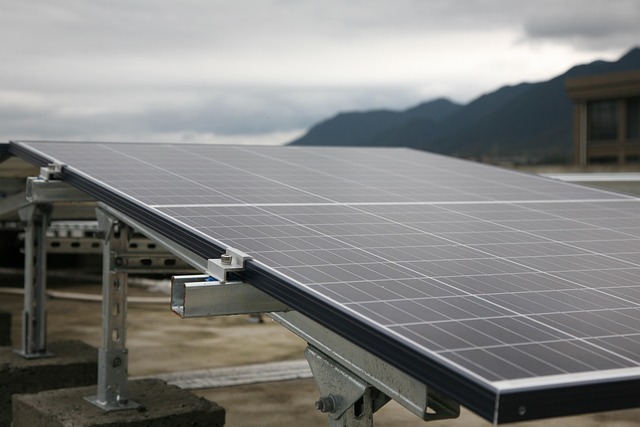Community-Driven Clean Energy Initiatives Making a Difference
As the world grapples with the pressing challenges of climate change, rising energy demands, and dwindling natural resources, communities around the globe have taken matters into their own hands. In the face of an urgent need for sustainable energy solutions, community-driven clean energy initiatives have emerged as beacons of hope. These grassroots efforts not only promote renewable energy but also foster social cohesion, economic growth, and environmental stewardship.
Defining Community-Driven Clean Energy Initiatives
Community-driven clean energy initiatives are projects and programs led by local communities aimed at generating, distributing, and using renewable energy. Such initiatives often prioritize the involvement of residents, local organizations, and businesses in planning and decision-making processes. The key elements include participation, collaboration, and a commitment to sustainability, which enables communities to tailor solutions to their unique needs and resources.
The Importance of Local Engagement
One of the most significant aspects of community-driven clean energy initiatives is local engagement. When community members are involved, the resulting projects often reflect the population’s values, needs, and aspirations. Engaging residents ensures that the energy solutions developed are not only efficient but also equitable and inclusive. This participatory approach strengthens community bonds and increases the resilience of the local economy.
Innovative Examples of Community Initiatives
1. Community Solar Projects
Community solar projects allow multiple households or businesses to invest in a shared solar energy system. These systems can be installed on underutilized land or rooftops, promoting clean energy accessibility for those who may not have the means for individual installations. Noteworthy examples include:
In Minnesota, the Community Solar Garden program allows residents to subscribe to a solar array that can provide them with credits on their electricity bills. This initiative has made solar energy accessible to renters and those unable to install solar panels on their homes.
2. Wind Cooperatives
Wind cooperatives present another innovative model, wherein community members band together to invest in wind energy projects. In the state of Vermont, residents have successfully established a cooperative called Vermont Electric Cooperative, which owns and operates wind turbines in the region. By pooling resources, local citizens benefit from lower energy costs while also participating in the transition to renewable energy.
3. Community Biomass Projects
Biomass energy is derived from organic materials, and community biomass projects leverage local resources to produce combined heat and power for residents. In rural Maine, the Wood Pellet & Biomass Working Group has developed systems that utilize locally sourced wood waste for energy production. This initiative not only offers a sustainable heating option but also stimulates local forestry operations.
4. Energy Efficiency Programs
Energy efficiency initiatives focus on reducing energy consumption through upgrades and improvements to homes and businesses. The Community Energy Efficiency Program in California provides financial incentives for residents to improve their energy efficiency. By encouraging the use of energy-efficient appliances and retrofitting buildings, this program reduces both energy bills and greenhouse gas emissions.
Building Economic Resilience
Community-driven clean energy initiatives are not solely about environmental benefits; they also play a critical role in enhancing local economies. By generating renewable energy, communities can reduce their reliance on imported fossil fuels, keeping energy dollars circulating within the local economy. New jobs created in the clean energy sector, from installation and maintenance to advocacy and education, foster a diverse economic landscape.
Addressing Social and Environmental Justice
Many clean energy initiatives directly address social and environmental justice, ensuring that marginalized communities have a stake in local energy projects. Access to affordable and sustainable energy is vital for all socio-economic classes, and community-driven projects often aim to dismantle barriers that prevent lower-income families from benefiting from renewable energy.
For example, the Green and Healthy Homes Initiative works with vulnerable populations to address energy burdens by providing education and efficiency upgrades. By doing so, the initiative not only reduces energy costs but also improves the overall quality of life.
Policy and Regulatory Support
The success of community-driven clean energy initiatives often hinges on supportive policy environments. Local governments can play a crucial role in creating incentives, providing funding, and streamlining regulation to facilitate community projects. Effective policies may include grants, feed-in tariffs, or tax credits for projects that encourage renewable energy deployment.
Many communities have found success by partnering with non-profit organizations and advocacy groups to lobby for favorable policies. In advancing clean energy initiatives at the local level, these partnerships create a unified voice, pressuring state and federal governments for broader systemic changes.
Challenges and Barriers
Despite their many successes, community-driven clean energy initiatives also face significant challenges. Funding, technical expertise, and policy barriers can hinder project development. Many communities struggle to secure the initial capital needed to launch clean energy projects, and obtaining technical knowledge for implementation can be daunting without proper training and support.
The Road Ahead
Looking toward the future, community-driven clean energy initiatives are poised to play a significant role in the transition to a sustainable energy future. We must continue to invest in these initiatives, providing the necessary resources and support to foster their growth and development. Empowering local communities to take charge of their energy needs enhances resilience and strengthens the foundation for a more sustainable planet.
Conclusion
Throughout the world, community-driven clean energy initiatives demonstrate that collaboration, innovation, and dedication can uniquely address the dual challenges of energy and environmental sustainability. By harnessing local expertise and resources, communities are making a measurable difference in the fight against climate change. As these initiatives continue to expand and evolve, they hold the promise of a cleaner, greener, and more equitable future for all.
